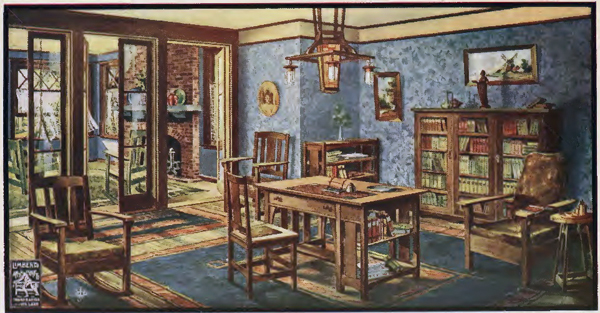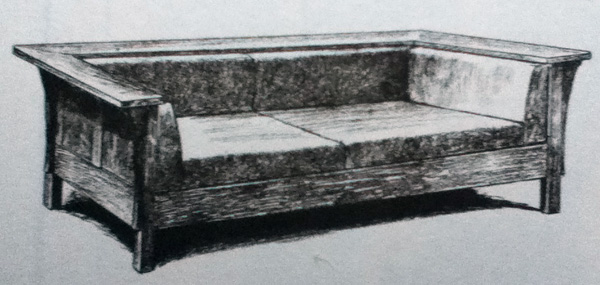While the open floor plan is not without its appeal, it tends to work better when divided into functional zones. The folding screen, a staple of Arts & Crafts catalogs at the turn of the 20th century, is one way to help define these zones, but an open shelf like this design by an unknown maker accomplishes much the same effect without creating a solid barrier. The asymmetrical grid and single drawer liven the design, while construction is relatively straightforward. The two side frames capture the mitered case while dadoes house the shelves and vertical dividers. Half-blind dovetails join the sides and ends of the drawer box, but simpler joinery would suffice.
Tag Archives: design
L & J.G. Stickley’s No. 220 Settle
I sometimes wonder whether the Stickley brothers ever gathered as a group in adulthood. I picture them, perhaps sitting down to Thanksgiving dinner, or watching their children open Christmas presents, and imagine the undercurrents and tensions that likely arose when five brothers–Gustav, Leopold, John George, Albert, and Charles–all engaged, in various combinations of partnership, in the same profession with varying degrees of success in New York and Michigan–came together in a single place. Shared meals could have been especially fraught after Gustav’s bankruptcy and short-lived association with Leopold and John George’s company. The latter two brothers built their company on designs in the same style as Gustav’s Craftsman furniture before adapting to changing tastes. While the No. 220 settle shows a Craftsman influence, it is, as Bob Lang observers in Shop Drawings for Craftsman Furniture unlike anything produced by Gustav Stickley. Continue reading
Limbert Furniture Design

An illustration from one of Limbert’s booklets showing a library furnished with pieces by the company.
Limbert is often dismissed as a copyist of more capable designers, but at his best, he was a capable synthesist, combining diverse elements from European, American, and Japanese design into striking (and sometimes strikingly modern) forms. The sources for his inspiration are wide ranging. His earliest Arts and Craft line shows a debt to the architect Charles Voysey, Dutch folk forms, and Art Nouveau. The later line shows Limbert’s familiarity with the Craftsman furniture produced by Gustav Stickley, the Prairie Style of Frank Lloyd Wright, and the work of Charles Rennie Mackintosh and the Vienna Secessionists. The exposed joinery, rectilinear forms and visual mass of this furniture would not be out of place in the offerings of the many manufacturers responding to the increasing popularity of Craftsman furniture. Some of these designs match or exceed Stickley’s. Continue reading


